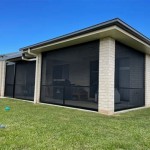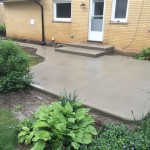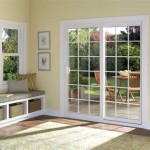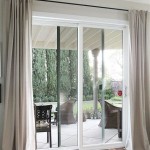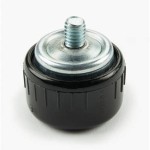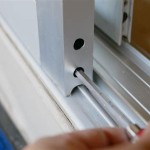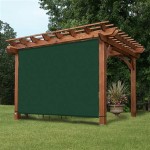```html
Glass Replacement For Patio Door: A Comprehensive Guide
Patio doors serve as a crucial transition between indoor and outdoor spaces, enhancing natural light and providing convenient access to patios, decks, and gardens. Over time, however, the glass in patio doors can become damaged due to various factors, necessitating replacement. This article provides a comprehensive guide to understanding the process of glass replacement for patio doors, covering different types of glass, potential issues, and the steps involved in ensuring a successful replacement.
Identifying the Need for Patio Door Glass Replacement
Several indicators suggest the need for patio door glass replacement. Obvious signs include visible cracks, chips, or breaks in the glass. These damages not only compromise the aesthetic appeal of the door, but also create safety hazards and reduce the door's energy efficiency. Even small cracks can gradually expand due to temperature fluctuations and stress, eventually leading to significant damage. Beyond visible damage, a foggy or cloudy appearance between the panes of glass in double-pane or multi-pane doors indicates a seal failure. This means that the insulating gas between the panes has leaked out, and moisture has entered, reducing the door's insulation capabilities. A significant increase in energy bills may also hint at a problem with the patio door glass, as compromised insulation increases the workload on heating and cooling systems.
Condensation forming consistently on the interior surface of the glass, despite proper ventilation, can also be a sign of seal failure. This condensation indicates that the glass is no longer effectively preventing temperature transfer. Furthermore, noticing drafts around the edges of the patio door, even when it is closed and locked, can point to issues with the glass or its surrounding seal. While drafts might also stem from faulty weather stripping, compromised glass can contribute to air leakage. Evaluating these indicators carefully is essential to determine if glass replacement is the appropriate solution. In some cases, a full door replacement might be necessary if the frame itself is damaged or significantly warped.
Types of Glass Used in Patio Doors
The type of glass used in a patio door significantly impacts its performance, safety, and energy efficiency. Several options are available, each offering distinct advantages. Standard annealed glass, while common, is not typically used in patio doors due to its fragility. When broken, annealed glass shatters into large, sharp pieces, posing a significant safety risk. Tempered glass, on the other hand, is a heat-treated glass that is significantly stronger than annealed glass. If broken, tempered glass shatters into small, relatively harmless fragments, making it a much safer option for patio doors, especially in areas with high traffic or potential impact. Most building codes mandate the use of tempered glass in patio doors for safety reasons.
Laminated glass consists of two or more layers of glass bonded together with a plastic interlayer. This interlayer holds the glass fragments together even when broken, preventing them from scattering and providing enhanced security and impact resistance. Laminated glass is often used in areas where security is a primary concern or in locations prone to severe weather. Insulated glass units (IGUs), also known as double-pane or multi-pane glass, consist of two or more panes of glass separated by a spacer and sealed to create an air or gas-filled cavity. This cavity significantly improves the door's insulation properties, reducing heat transfer and improving energy efficiency. IGUs can be filled with argon or krypton gas, which are denser than air, further enhancing their insulation performance. Low-E (low-emissivity) glass is coated with a thin, transparent coating that reflects infrared and ultraviolet light, reducing heat gain in the summer and heat loss in the winter. Low-E coatings improve energy efficiency and reduce fading of interior furnishings caused by UV exposure.
Obscure glass, also known as frosted or textured glass, provides privacy while still allowing light to pass through. It is often used in patio doors where privacy is desired, such as in bathrooms or near neighboring properties. Tinted glass reduces glare and heat gain by absorbing a portion of the incoming solar radiation. It is available in various shades and can be used to enhance privacy and improve comfort. Choosing the appropriate type of glass depends on factors such as safety requirements, energy efficiency goals, security concerns, privacy needs, and aesthetic preferences.
The Glass Replacement Process: A Step-by-Step Guide
Replacing patio door glass is a task that can be undertaken by experienced DIYers, but it often requires specialized tools and expertise to ensure a proper and safe installation. If unsure, it's best to hire a professional glazier. The first step involves accurately measuring the existing glass dimensions. Precise measurements are crucial to ensure that the replacement glass fits properly in the frame. Measure the height, width, and thickness of the glass carefully, and note any specific dimensions or features, such as rounded corners or beveled edges. Before removing the old glass, gather the necessary tools and materials. These typically include safety glasses, work gloves, a putty knife or scraper, a flathead screwdriver, a glass cutter (if needed), measuring tape, a vacuum cleaner, glass cleaner, glazing compound or caulk, and shims.
Wearing safety glasses and gloves is essential to protect eyes and hands from glass shards. Carefully remove any trim, stops, or moldings that hold the glass in place. Use a putty knife or scraper to gently loosen the trim, being careful not to damage the frame. Once the trim is removed, carefully extract the old glass. If the glass is cracked or broken, take extra precautions to avoid injury. Use gloves to protect your hands from sharp edges. Gently pry the glass loose from the frame, using a putty knife or screwdriver to loosen any remaining sealant. Vacuum the frame to remove any glass shards, loose debris, or old sealant. Ensure the frame is clean and dry before installing the new glass. Apply a bead of glazing compound or caulk around the perimeter of the frame where the glass will sit. This sealant will provide a waterproof and airtight seal.
Carefully position the new glass into the frame, ensuring it is centered and aligned properly. Use shims to hold the glass in place and ensure it is level. Secure the glass with new trim, stops, or moldings. Reattach the trim, stops, or moldings, ensuring they are securely fastened. Use small nails or screws to hold them in place. Apply a bead of caulk around the perimeter of the glass where it meets the frame. This will further seal the glass and prevent air and water infiltration. Smooth the caulk with a wet finger or a caulk smoothing tool for a professional finish. Clean the glass thoroughly with glass cleaner and a soft cloth. Inspect the glass for any streaks, smudges, or imperfections. Ensure that the sealant is fully cured before exposing the door to moisture or extreme temperatures. Allow the sealant to dry and cure according to the manufacturer's instructions.
Factors Influencing the Cost of Glass Replacement
Several factors influence the cost of patio door glass replacement. The type of glass is a primary determinant. Tempered glass, laminated glass, insulated glass units (IGUs), and specialty glass types like Low-E or obscure glass will all have different price points. IGUs, due to their complex construction, are generally more expensive than single-pane glass. The size and thickness of the glass also impact the cost. Larger panes of glass and thicker glass require more materials and labor, resulting in higher prices. The complexity of the installation can also affect the cost. If the frame is damaged or requires repair, or if the installation is particularly challenging due to the door's design or location, the labor costs will likely increase.
The location of the property can influence the overall cost. Labor rates and material costs can vary depending on the region. Obtaining multiple quotes from different glaziers is recommended to ensure a competitive price. Labor costs will vary based on the glazier's experience, skill level, and overhead expenses. It is vital to ask about the glazier's experience and qualifications before hiring them. Any additional services required, such as disposal of the old glass, frame repairs, or weather stripping replacement, will add to the overall cost. Be sure to clarify what services are included in the quote and what additional charges may apply. If the patio door is under warranty, the glass replacement may be covered, either partially or fully. Check the warranty terms and conditions to determine if the replacement is eligible for coverage. Comparing quotes, understanding the factors influencing costs, and checking warranty options are critical steps in managing the expenses associated with patio door glass replacement.
```
How To Replace Dual Pane Glass Patio Doors

All You Need To Know About Patio Door Glass Replacement

Solutions For Patio Glass Door Replacement Doctor

Can You Replace Patio Door Glass The Same Day Valleywide

How To Replace Cloudy Glass In A Patio Door Youtube

7 Reasons To Repair Or Replace Your Sliding Glass Door

Sliding Patio Glass Door Hinge Roller Silicone Repair Replacement

Luxury Sliding Patio Door Glazing Replacement Checkatrade Case Studies

Schedule An Estimate For Patio Door Installation Glass Doctor

Patio Door Replacement And Glass Repair Valleywide

